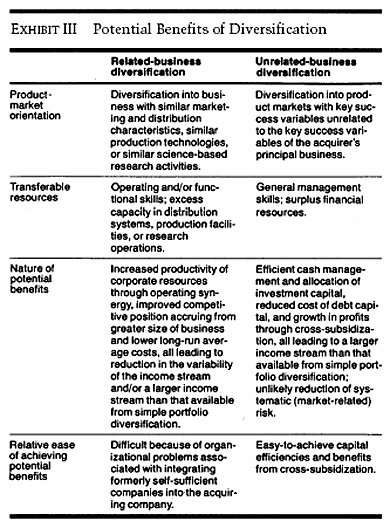STRATEGIES Diversify! Diversify! Well Not So Fast
Post on: 3 Май, 2015 No Comment

By MARK HULBERT
Published: April 11, 2004
ONE of the more controversial beliefs of Warren E. Buffett, the chairman of Berkshire Hathaway, is that diversification is not always good. If you are a »know-something investor,» he wrote in a 1993 letter to shareholders, spreading your bets among a large number of stocks is likely »to hurt your results and increase your risk.» A new academic study finds that Mr. Buffett may be right.
Even before the new research, the performance of Berkshire Hathaway stock provided strong support for Mr. Buffett’s belief. Though the company’s assets do not constitute a widely diversified portfolio, its stock has not been riskier than the overall stock market, as judged by the volatility of its returns. Since 1965, in fact, the yearly percentage changes in Berkshire Hathaway’s book value, one barometer of Mr. Buffett’s investment ability, have been 16 percent less volatile than those of the Standard & Poor’s 500-stock index. Despite that, Berkshire has outperformed the index in 34 of the last 39 years, and by nearly 12 percentage points a year, annualized, since 1965, when Mr. Buffett took over management of the company.
Nevertheless, many finance professors have considered Mr. Buffett’s company stock an exception, in performance as well as risk. They have predicted that less diversified portfolios, on average, will be significantly riskier than more diversified ones, yet will perform no better.
The prediction stems from the belief that stock-picking ability is rare — that few people can beat the market over the long term. This implies that there should be no significant difference in the average returns of these two groups of funds, but the less diversified funds should still be riskier because they are more concentrated in just a few industries.
If these finance professors are right, managers who construct less diversified funds are either deluded about their own stock-picking abilities or are deliberately taking on risk for reasons other than long-term performance. Several studies over the last decade have shown that finishing near the top of quarterly or yearly performance rankings leads to large inflows of new cash for a fund. Because a widely diversified portfolio is unlikely to reach the top of those short-term rankings, some managers may turn to the greater risk of a less diversified portfolio to attract more investment.
papers.ssrn.com/sol3/papers.cfm?abstract-id=353420. The study’s authors are two University of Michigan finance professors, Clemens Sialm and Lu Zheng, and one of their Ph.D. graduate students, Marcin T. Kacperczyk.
The researchers focused on a database containing virtually all actively managed domestic equity mutual funds from January 1984 through December 1999. Sector funds were eliminated from the study because, by definition, they do not reflect the diversity of the stock market. For funds with multiple classes, only one class was used.
For each of the nearly 1,800 funds in the study, the researchers calculated what they called a divergence index, based on the fund’s concentrations in 10 broad industry groupings, relative to the overall market. A fund that had the same percentage weightings as the market in each of these 10 groups would have a divergence index of zero; funds would get progressively higher index numbers as their allocations to those industries differed from the market’s.
Over the 16 years studied, the funds with the highest divergence index readings — those with the least diversification — produced the greatest average returns. By contrast, the most diversified funds lagged behind the market. The researchers found that the 10 percent of funds that were least diversified performed 1.9 percent a year better than the 10 percent that best represented the broad stock market. This result persisted even after adjusting the performances of the least-diversified funds for any greater risk they might have incurred.
Professor Zheng says she and her fellow researchers were initially skeptical of their findings, which ran counter to academic orthodoxy, so they subjected the results to a battery of tests. Yet their conclusion withstood every attempt to explain it away.
Was it possible that the least diversified funds were concentrated in technology stocks, which soared in the late 1990’s? After all, the analysis ended in 1999, just before the tech bubble burst. But if the results were dominated by the stellar returns of a few tech funds, it would be difficult to draw a conclusion about performance of less diversified funds in general.
The researchers say they do not believe that tech-fund returns explain their findings. They found, for example, that the least diversified funds outperformed the most diversified just as much in the 1980’s as they did in the 90’s. And they found that the primary reason for the less diversified funds’ market-beating returns was not investing in the best-performing industries but picking stocks that outperformed their industries.

The study also checked the possibility that funds with fewer assets, on average, outperformed larger funds — a pattern found in previous studies. Although smaller funds also tend to be less diversified, were their better returns attributable to their size, not to their degree of diversification?
But the researchers dismissed this possibility, too. They found that a fund’s performance was correlated more to its divergence index than to its size. Even among small funds, the least diversified fared better, on average, than the most diversified.
The researchers did find, however, that less diversified funds tended to have an above-average concentration in small-capitalization stocks and were more skewed toward growth stocks than value stocks.
That makes sense, according to Andrew Metrick, a finance professor at the Wharton School of the University of Pennsylvania. Small-cap stocks tend to have less of a following among analysts, he noted, and small-cap growth stocks, in particular, tend to be those for which conventional balance-sheet analysis is least helpful. »To the extent managers have stock-picking ability,» Professor Metrick said, »the place we are most likely to find it would be small-cap growth stocks.»
The study has several implications for investors. Generally, the researchers say, it shows that stock-picking ability does exist — that investors are not necessarily being irrational when they choose an actively managed fund over an index fund.
But the results also imply that market-beating managers are more likely to be found at small-cap growth funds. While investors may do well to favor index funds in large-cap or value-oriented market sectors, they may want actively managed funds with strong long-term records when investing in small-cap growth stocks.
Chart: »Concentrated Gains» A study of nearly 1,800 actively managed domestic stock funds from 1984 through 1999 found that less diversified funds had higher returns. Graph tracks performance relative to funds with similar equity exposure, market capitalization of stocks and approach (growth versus value). (Sources by Clemens Sialm, Lu Zheng and Marcin T. Kacperczyk, University of Michigan)
Mark Hulbert is editor of The Hulbert Financial Digest, a service of CBS MarketWatch. His column on investment strategies appears every other week. E-mail: strategy@nytimes.com.














